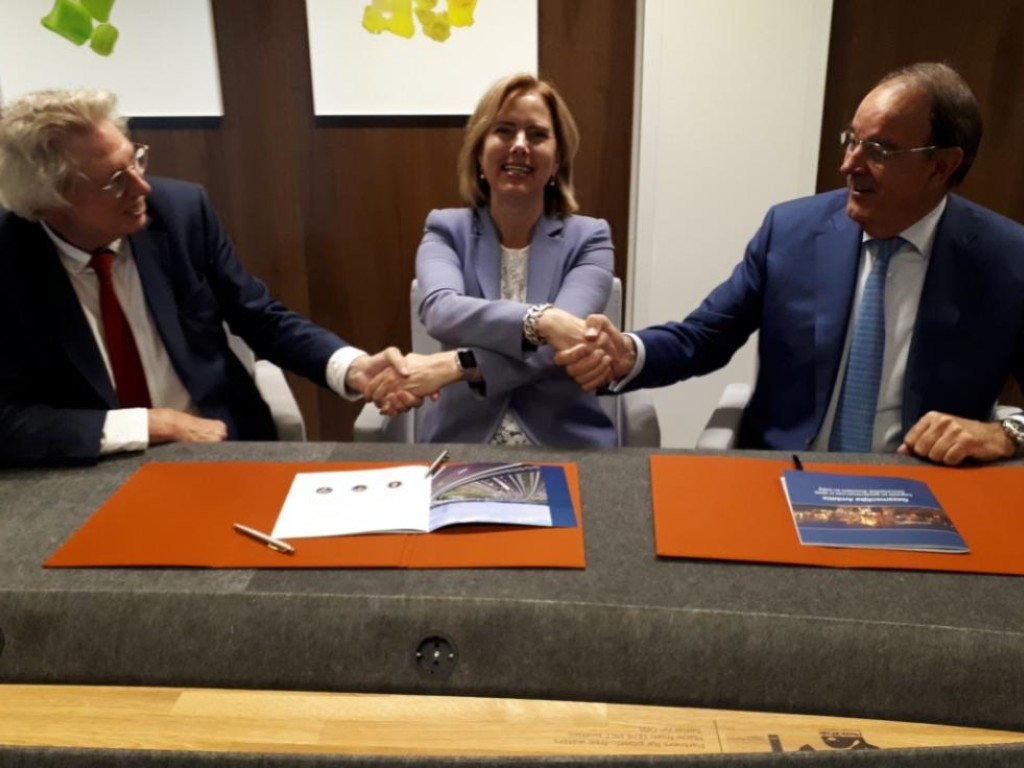Together towards competitive, zero-emission and safe logistics by 2050
On Thursday 4 July, Minister Cora van Nieuwenhuizen of the Ministry of Infrastructure and Water Management (I&W), Aad Veenman, figurehead of the Top Sector Logistics and Steven Lak, chairman of the Logistics Alliance, signed their joint ambition document 'Logistics and freight transport in 2050'. With this, there is a common set of challenging ambitions and goals that all logistics parties support. "With this ambition document, we set the bar high. This is also necessary if we want to have a logistics system in the Netherlands that is competitive, emission-free and safe by 2050," said Aad Veenman. Minister van Nieuwenhuizen: "The Netherlands is leading the way with innovations that make our logistics safer and cleaner. With this package, the sector and partners are showing that they will continue to work with this for the transport of the future."
Fast-changing world
Over the years, the Netherlands has managed to build an excellent logistics system, which is also highly regarded internationally. The added value of logistics and freight transport by logistics service providers as well as trade and manufacturing companies amounts to 9.4% of the Gross Domestic Product. This does not mean that the logistics sector can rest on its laurels. Developments such as the growing demand for transport, urbanisation, technological innovations and the commitment to the climate agreement create new challenges. If, as the Netherlands, we want to continue to exploit and build on our good starting position in logistics and freight transport, we must face these developments and seize the opportunities they present.
Seven themes
To realise the joint ambitions, seven themes have been formulated. These include knowledge development and innovative solutions in areas such as electric transport, horizontal chain cooperation and alternative energy sources. Within the theme of sustainability, a proper balance will be sought between reducing CO2 emissions by 95% in 2050 and maintaining the sector's competitiveness. In the field of safety, an even stronger safety culture will be worked on in the near future, based on a chain approach.
The theme of multimodal nodes and connections addresses the question of how to make better use of our available infrastructures given the expected growth in demand for freight transport. Due to current developments, the nature of work in logistics is expected to change in the future. Within the human capital theme, we are looking at how to increase the sustainable employability and labour productivity of employees. The effect of changes in our logistics system within the international context in which the sector operates is examined within the theme of internationalisation. Finally, the theme image has been named to increase the appropriate image of the usefulness and necessity of logistics among the Dutch public.
Working together
Because the formulated ambitions and goals exceed the clout of individual parties, the commitment of all parties involved is important. Companies, knowledge institutes and the government will initiate separate processes in the short term, aimed at realising the formulated ambition.
